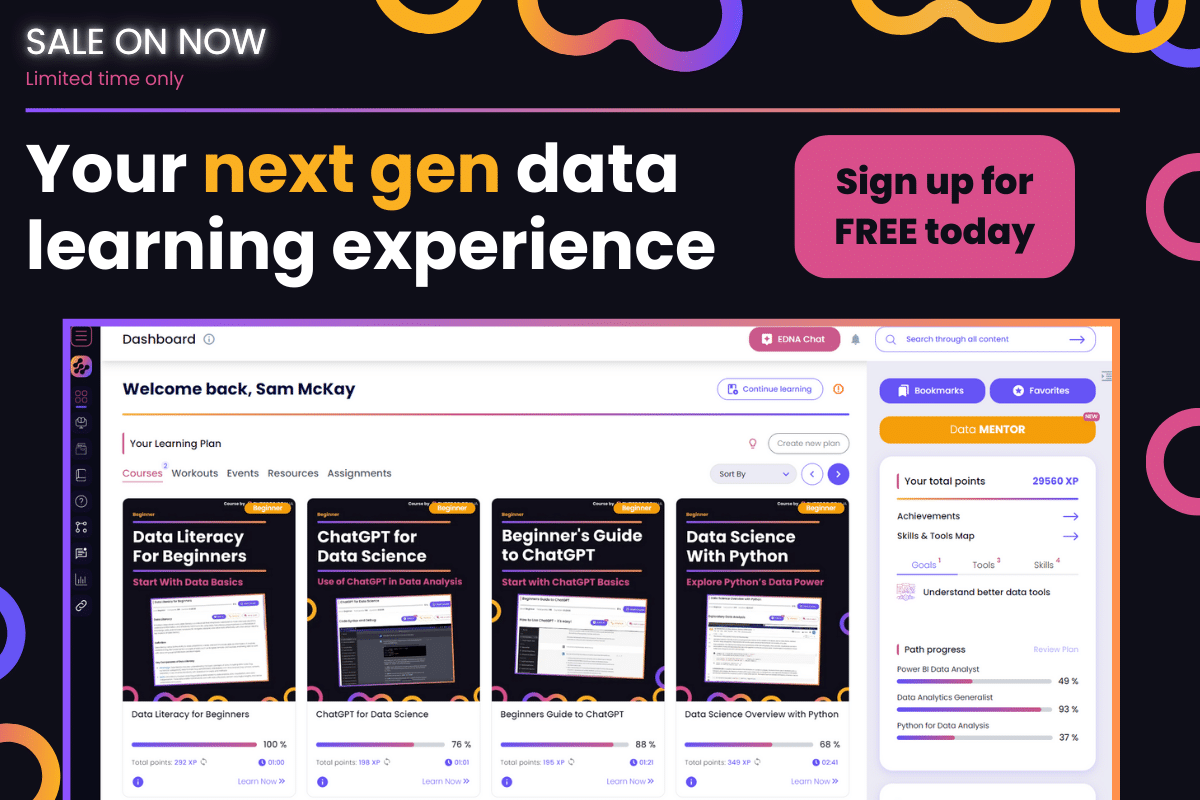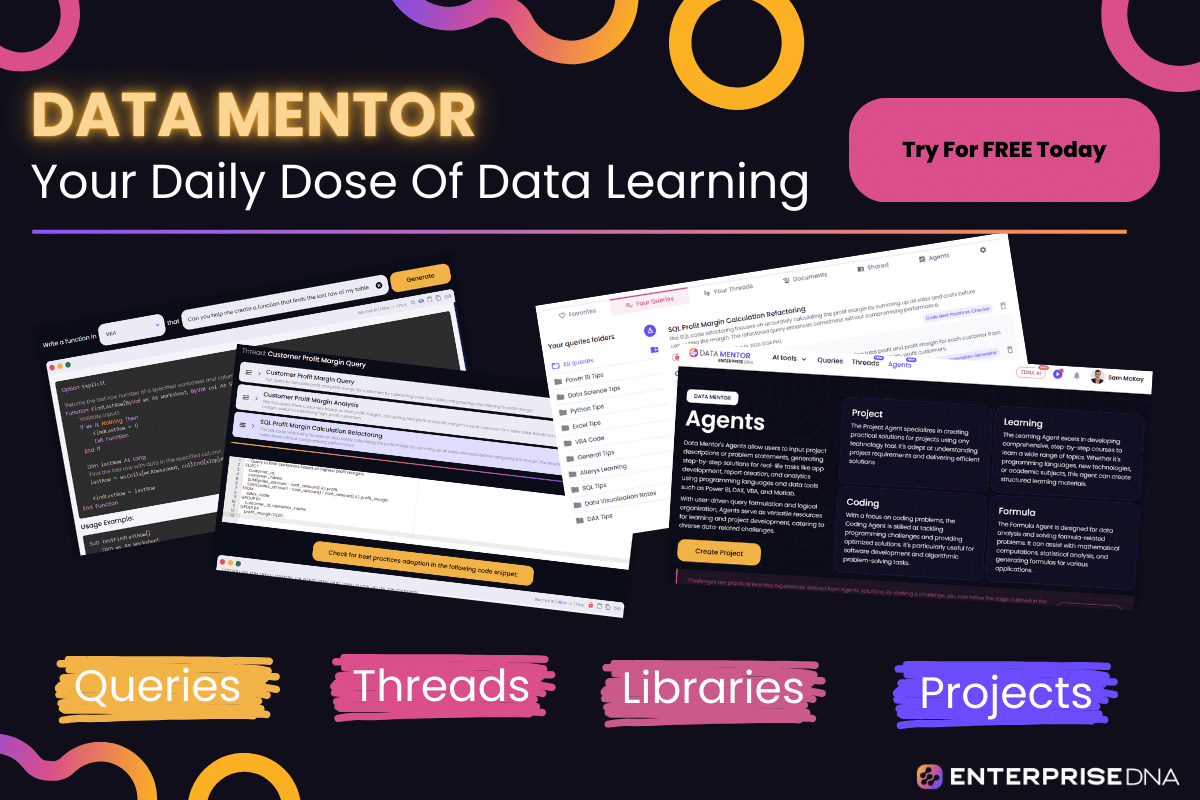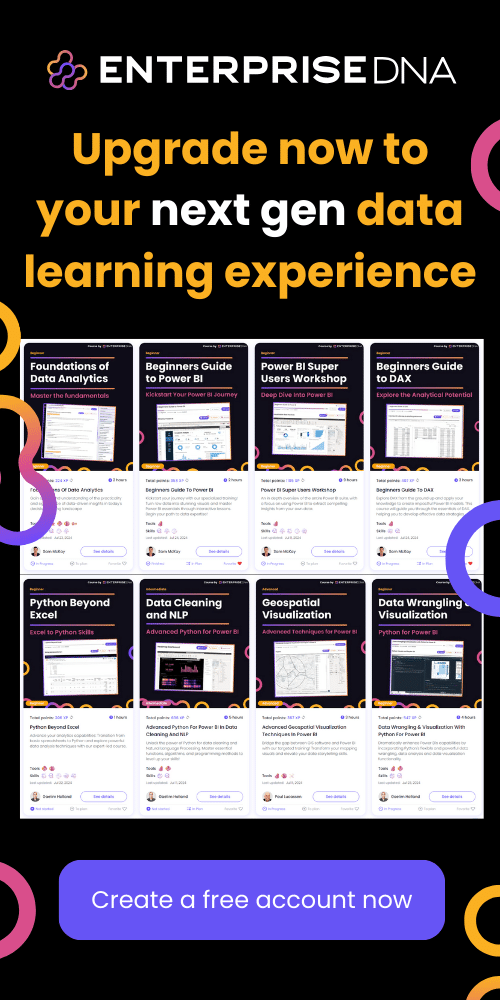Introduction to Time Series and Python
Overview
Time series analysis involves understanding and modeling data points collected or recorded at specific time intervals. It is commonly used in various fields such as economics, finance, environmental studies, and more. This section aims to introduce the fundamental concepts of time series analysis, focusing on preparation, visualization, and initial exploration using Python.
Prerequisites
- Basic understanding of Python programming
- Libraries required: pandas, numpy, matplotlib, statsmodels
pip install pandas numpy matplotlib statsmodels
1. Data Preparation
Import Libraries
First, we need to import the necessary libraries.
import pandas as pd
import numpy as np
import matplotlib.pyplot as plt
from statsmodels.tsa.seasonal import seasonal_decompose
Load Data
Load your time series data into a pandas DataFrame. Here’s an example using hypothetical data:
# Create a sample DataFrame
date_rng = pd.date_range(start='2020-01-01', end='2021-01-01', freq='D')
df = pd.DataFrame(date_rng, columns=['date'])
df['data'] = np.random.randn(len(df))
# Set the date as index
df.set_index('date', inplace=True)
Inspect Data
Inspect the first few rows and summary statistics of the data to understand its structure.
print(df.head())
print(df.describe())
2. Visualization
Line Plot
Plot the entire time series to visualize the trend over time.
plt.figure(figsize=(12, 6))
plt.plot(df.index, df['data'], label='Data')
plt.title('Time Series Data')
plt.xlabel('Date')
plt.ylabel('Values')
plt.legend()
plt.show()
Decomposing the Series
Decompose the time series into trend, seasonality, and residual components.
result = seasonal_decompose(df['data'], model='additive', period=30)
result.plot()
plt.show()
3. Basic Statistical Analysis
Rolling Statistics
Calculate and visualize rolling mean and variance to understand the stability of the series.
rolling_mean = df['data'].rolling(window=12).mean()
rolling_std = df['data'].rolling(window=12).std()
plt.figure(figsize=(12, 6))
plt.plot(df['data'], label='Original')
plt.plot(rolling_mean, color='red', label='Rolling Mean')
plt.plot(rolling_std, color='black', label='Rolling Std')
plt.title('Rolling Mean & Standard Deviation')
plt.legend()
plt.show()
Stationarity Test
Perform the Augmented Dickey-Fuller (ADF) test to check if the time series is stationary.
from statsmodels.tsa.stattools import adfuller
adf_test = adfuller(df['data'])
print('ADF Statistic:', adf_test[0])
print('p-value:', adf_test[1])
Summary
This introduction covers the foundation of time series analysis by:
- Preparing the data
- Visualizing the time series
- Conducting basic statistical analysis
In the next sections, we will delve deeper into advanced forecasting techniques and model-building processes.
Data Preparation and Cleaning for Time Series
In this segment, we’ll handle several key steps to prepare and clean time series data, ensuring that it’s ready for analysis and forecasting.
1. Data Loading
First, ensure that your time series data is loaded into a data structure suitable for manipulation.
import pandas as pd
# Load the data from a CSV file into a Pandas DataFrame
data = pd.read_csv('time_series_data.csv', parse_dates=['date_column'], index_col='date_column')
2. Handling Missing Values
Identify and handle any missing values in your time series data.
Checking for Missing Values
missing_values = data.isnull().sum()
print(missing_values)
Filling Missing Values
You can fill missing values using forward fill, backward fill, or interpolation.
# Forward fill
data_filled = data.fillna(method='ffill')
# Backward fill
data_filled = data.fillna(method='bfill')
# Interpolation
data_filled = data.interpolate()
3. Resampling the Time Series
Ensure that the data is uniformly sampled by resampling it to a specified frequency (e.g., daily, monthly).
# Resample the data to a daily frequency, assuming 'data' has a DateTime index.
data_resampled = data_filled.resample('D').mean()
4. Removing Duplicates
Remove any duplicate entries in your time series.
data_cleaned = data_resampled.drop_duplicates()
5. Identifying and Handling Outliers
Detect outliers and decide on a strategy to handle them. One common method is the Z-score.
from scipy import stats
# Calculate Z-scores of the data
z_scores = stats.zscore(data_cleaned)
# Identify outliers
threshold = 3
outliers = abs(z_scores) > threshold
data_no_outliers = data_cleaned[~outliers.any(axis=1)]
6. Decompose the Time Series Components
Decompose the time series into its trend, seasonal, and residual components for better understanding and analysis.
from statsmodels.tsa.seasonal import seasonal_decompose
decomposition = seasonal_decompose(data_no_outliers, model='additive')
trend = decomposition.trend
seasonal = decomposition.seasonal
residual = decomposition.resid
7. Smoothing
Apply a smoothing technique like moving average to the time series to smooth out short-term fluctuations.
data_smoothed = data_no_outliers.rolling(window=5).mean()
8. Normalization or Standardization
Normalize or standardize the time series data for improved performance of forecasting models.
Normalization
data_normalized = (data_cleaned - data_cleaned.min()) / (data_cleaned.max() - data_cleaned.min())
Standardization
data_standardized = (data_cleaned - data_cleaned.mean()) / data_cleaned.std()
Conclusion
By following these steps, your time series data should now be clean, prepared, and ready for further analysis and forecasting. This preprocessing ensures that anomalies are addressed and the data is consistent, enabling robust analytics and accurate predictive models.
Exploratory Data Analysis in Time Series
In this section, we will go through a practical implementation of exploratory data analysis (EDA) in time series using Python. This will cover:
- Loading Data
- Descriptive Statistics
- Visualizing the Time Series
- Seasonality and Trend Decomposition
- Autocorrelation Analysis
1. Loading Data
Assume the data is loaded into a Pandas DataFrame called df with a time-based index named date and one time series column named value.
import pandas as pd
# Mock data loading - replace this with actual data loading step
df = pd.read_csv('time_series_data.csv', index_col='date', parse_dates=True)
2. Descriptive Statistics
Perform basic statistical analysis.
print("Descriptive Statistics:")
print(df['value'].describe())
3. Visualizing the Time Series
Plot the time series data to understand its structure.
import matplotlib.pyplot as plt
plt.figure(figsize=(10, 6))
plt.plot(df.index, df['value'], label='Time Series')
plt.title('Time Series Plot')
plt.xlabel('Date')
plt.ylabel('Value')
plt.legend()
plt.show()
4. Seasonality and Trend Decomposition
Decompose the time series into trend, seasonal, and residual components.
from statsmodels.tsa.seasonal import seasonal_decompose
decomposition = seasonal_decompose(df['value'], model='additive', period=12)
trend = decomposition.trend
seasonal = decomposition.seasonal
residual = decomposition.resid
plt.figure(figsize=(12, 8))
plt.subplot(411)
plt.plot(df['value'], label='Original')
plt.legend(loc='best')
plt.subplot(412)
plt.plot(trend, label='Trend')
plt.legend(loc='best')
plt.subplot(413)
plt.plot(seasonal, label='Seasonality')
plt.legend(loc='best')
plt.subplot(414)
plt.plot(residual, label='Residuals')
plt.legend(loc='best')
plt.tight_layout()
plt.show()
5. Autocorrelation Analysis
Analyze autocorrelation to check for randomness in data and identify patterns.
from statsmodels.graphics.tsaplots import plot_acf, plot_pacf
plt.figure(figsize=(12, 6))
plt.subplot(121)
plot_acf(df['value'], ax=plt.gca(), lags=50)
plt.title('Autocorrelation')
plt.subplot(122)
plot_pacf(df['value'], ax=plt.gca(), lags=50)
plt.title('Partial Autocorrelation')
plt.show()
This practical implementation should provide a comprehensive approach for exploratory data analysis in time series, allowing you to extract insightful patterns and trends from your data.
Time Series Decomposition and Trends
In this section, we will focus on decomposing a time series into its essential components: trend, seasonality, and residuals. This technique helps in better understanding the underlying patterns and can be applied to improve forecasting.
Decomposition Using Python
We will use the statsmodels library for this task.
Step 1: Import Necessary Libraries
import pandas as pd
import numpy as np
from statsmodels.tsa.seasonal import seasonal_decompose
import matplotlib.pyplot as plt
Step 2: Load Time Series Data
Assume we have a CSV file data.csv with two columns: Date and Value.
# Load data
data = pd.read_csv('data.csv', parse_dates=['Date'], index_col='Date')
# Check the DataFrame
print(data.head())
Step 3: Decompose the Time Series
We will use the additive model for decomposition, where:
Observed = Trend + Seasonality + Residual
# Perform decomposition
decomposition = seasonal_decompose(data['Value'], model='additive')
# Extract components
trend = decomposition.trend
seasonal = decomposition.seasonal
residual = decomposition.resid
Step 4: Plot the Decomposed Components
# Plot the decomposition
plt.figure(figsize=(15, 10))
plt.subplot(411)
plt.plot(data['Value'], label='Original')
plt.legend(loc='best')
plt.subplot(412)
plt.plot(trend, label='Trend')
plt.legend(loc='best')
plt.subplot(413)
plt.plot(seasonal, label='Seasonality')
plt.legend(loc='best')
plt.subplot(414)
plt.plot(residual, label='Residual')
plt.legend(loc='best')
plt.tight_layout()
plt.show()
These four steps will help you decompose your time series data and visualize the individual components for further analysis.
Real-Life Application
This simple implementation can be extended to more advanced models and larger datasets. The decomposition helps in identifying significant patterns and anomalies, enabling better forecasting and decision-making.
Make sure to apply this decomposition technique on your dataset to clearly understand the hidden trends, periodic behavior, and random noise in your time series.
Autocorrelation and Time Series Statistics
Autocorrelation
Autocorrelation measures how the current value in a time series is correlated with its previous values. This helps in identifying repeating patterns or cyclic behavior within the data.
Practical Implementation in Python
import pandas as pd
import numpy as np
import matplotlib.pyplot as plt
from statsmodels.graphics.tsaplots import plot_acf, plot_pacf
# Assuming ts_data is your time series data as a Pandas Series
ts_data = pd.Series([your_time_series_data_here])
# Plotting Autocorrelation Function (ACF)
plt.figure(figsize=(12, 6))
plot_acf(ts_data, lags=40)
plt.title('Autocorrelation Function (ACF)')
plt.show()
# Plotting Partial Autocorrelation Function (PACF)
plt.figure(figsize=(12, 6))
plot_pacf(ts_data, lags=40)
plt.title('Partial Autocorrelation Function (PACF)')
plt.show()
Time Series Statistics
Statistics such as mean, variance, and standard deviation can help describe the time series data.
Practical Implementation in Python
# Calculate basic time series statistics
mean_value = ts_data.mean()
variance_value = ts_data.var()
std_deviation_value = ts_data.std()
print(f"Mean: {mean_value}")
print(f"Variance: {variance_value}")
print(f"Standard Deviation: {std_deviation_value}")
Lagged Features
Creating lagged features can help in identifying the relationship between previous time steps and the current time step.
Practical Implementation in Python
# Create lagged features
ts_data_lagged = pd.concat([ts_data.shift(i) for i in range(1, 4)], axis=1)
ts_data_lagged.columns = ['Lag1', 'Lag2', 'Lag3']
print(ts_data_lagged.head())
Rolling Statistics
Rolling statistics help in smoothing the time series and identifying trends.
Practical Implementation in Python
# Calculate rolling mean and rolling standard deviation
rolling_mean = ts_data.rolling(window=12).mean()
rolling_std = ts_data.rolling(window=12).std()
plt.figure(figsize=(12, 6))
plt.plot(ts_data, label='Original Time Series')
plt.plot(rolling_mean, color='red', label='Rolling Mean')
plt.plot(rolling_std, color='black', label='Rolling Std Dev')
plt.title('Rolling Mean & Standard Deviation')
plt.legend()
plt.show()
Stationarity
Testing for stationarity involves checking if the statistical properties of the time series don’t change over time. The Augmented Dickey-Fuller test is commonly used for this purpose.
Practical Implementation in Python
from statsmodels.tsa.stattools import adfuller
# Perform Augmented Dickey-Fuller test
adf_test = adfuller(ts_data)
print('ADF Statistic:', adf_test[0])
print('p-value:', adf_test[1])
print('Critical Values:')
for key, value in adf_test[4].items():
print(f' {key}: {value}')
Summary
In this implementation, we’ve covered the practical application of autocorrelation, time series statistics, lagged features, rolling statistics, and stationarity checks. These tools are essential for effective time series analysis and preparing data for forecasting models.
Modeling and Forecasting with ARIMA
Step 1: Import Necessary Libraries
import pandas as pd
import numpy as np
from statsmodels.tsa.arima.model import ARIMA
import matplotlib.pyplot as plt
Step 2: Load and Inspect Data
Assuming your data is already cleaned and structured in a Pandas DataFrame called data with a Date column as index and a Value column for the time series values.
# Example data loading step if not already done:
# data = pd.read_csv('your_data.csv', index_col='Date', parse_dates=True)
data.index = pd.to_datetime(data.index) # Ensure the index is datetime
print(data.head()) # Inspect the initial few rows
Step 3: Fit ARIMA Model
# Define the order (p, d, q) - these parameters might need tuning
p, d, q = 5, 1, 0 # Example parameters
# Fit the ARIMA model
model = ARIMA(data['Value'], order=(p, d, q))
fitted_model = model.fit()
# Summary of the model
print(fitted_model.summary())
Step 4: Diagnostic Plots
# Plot the residuals to check for any patterns
residuals = fitted_model.resid
fig, ax = plt.subplots(1, 2, figsize=(16, 6))
residuals.plot(title="Residuals", ax=ax[0])
residuals.plot(kind='kde', title="Density of Residuals", ax=ax[1])
plt.show()
Step 5: Forecast Future Values
# Forecast future values using the model
forecast_steps = 10 # Number of steps to forecast
forecast = fitted_model.get_forecast(steps=forecast_steps)
forecast_index = pd.date_range(start=data.index[-1], periods=forecast_steps + 1, closed='right')
forecast_series = pd.Series(forecast.predicted_mean, index=forecast_index)
# Confidence intervals
forecast_ci = forecast.conf_int()
# Plot the forecast
plt.figure(figsize=(12, 6))
plt.plot(data, label='Original')
plt.plot(forecast_series, color='red', label='Forecast')
plt.fill_between(forecast_ci.index,
forecast_ci.iloc[:, 0],
forecast_ci.iloc[:, 1], color='pink', alpha=0.3)
plt.title('Forecast vs Actuals')
plt.legend()
plt.show()
By following these steps, you will be able to apply ARIMA modeling and forecasting to your time series data in Python. This process involves fitting an ARIMA model to your data, diagnosing the fit, and then using the model to forecast future values.
Advanced Forecasting Techniques in Time Series Analysis
This section will dive into advanced forecasting techniques including the state-of-the-art methods like Facebook Prophet, Long Short-Term Memory (LSTM) networks, and SARIMA for time series forecasting.
Facebook Prophet
Prophet is a forecasting tool designed to be intuitive and to perform well on data with strong seasonal effects and several seasons of historical data. Assume the time series dataframe df with columns ds (date) and y (value).
Implementation
from fbprophet import Prophet
import pandas as pd
# Load the data
df = pd.read_csv('your_data.csv')
# Initialize the model
model = Prophet()
# Fit the model
model.fit(df)
# Make a future dataframe
future = model.make_future_dataframe(periods=365) # Forecasting 365 days ahead
forecast = model.predict(future)
# Visualize the forecast
fig = model.plot(forecast)
# Plot forecast components
fig2 = model.plot_components(forecast)
Long Short-Term Memory (LSTM) Networks
LSTM networks are a type of Recurrent Neural Network (RNN) particularly well-suited to learning sequences of data.
Implementation
import numpy as np
import pandas as pd
import tensorflow as tf
from sklearn.preprocessing import MinMaxScaler
# Load and prep the data
df = pd.read_csv('your_data.csv')
values = df['value_column'].values.reshape(-1, 1) # Assuming univariate time series
scaler = MinMaxScaler()
scaled_values = scaler.fit_transform(values)
# Create sequences
def create_sequences(data, sequence_length):
sequences = []
labels = []
for i in range(len(data) - sequence_length):
sequences.append(data[i:i+sequence_length])
labels.append(data[i+sequence_length])
return np.array(sequences), np.array(labels)
sequence_length = 50 # Example sequence length
X, y = create_sequences(scaled_values, sequence_length)
# Train-test split
split = int(0.8 * len(X))
X_train, y_train = X[:split], y[:split]
X_test, y_test = X[split:], y[split:]
# Build LSTM model
model = tf.keras.Sequential()
model.add(tf.keras.layers.LSTM(50, return_sequences=True, input_shape=(sequence_length, 1)))
model.add(tf.keras.layers.LSTM(50))
model.add(tf.keras.layers.Dense(1))
model.compile(optimizer='adam', loss='mse')
model.fit(X_train, y_train, epochs=20, batch_size=32, validation_split=0.1)
# Make predictions
predictions = model.predict(X_test)
predictions = scaler.inverse_transform(predictions)
# Plot the results
import matplotlib.pyplot as plt
plt.figure(figsize=(10, 6))
plt.plot(df.index[-len(predictions):], df['value_column'].values[-len(predictions):], label='True Values')
plt.plot(df.index[-len(predictions):], predictions, label='Predictions')
plt.legend()
plt.show()
SARIMA
Seasonal ARIMA (SARIMA) incorporates seasonal components in ARIMA. Make sure seasonality is identified during EDA.
Implementation
import pandas as pd
import statsmodels.api as sm
# Load the data
df = pd.read_csv('your_data.csv', index_col='date_col', parse_dates=True)
# Differencing series to remove seasonality
seasonal_order = (1, 1, 1, 12) # Example order for monthly seasonality
# Fit SARIMA model
sarima_model = sm.tsa.statespace.SARIMAX(df['value_column'], order=(1, 1, 1), seasonal_order=seasonal_order)
sarima_results = sarima_model.fit()
# Forecast
forecast = sarima_results.get_forecast(steps=12)
forecast_ci = forecast.conf_int()
# Plot the results
import matplotlib.pyplot as plt
ax = df['value_column'].plot(label='observed')
forecast.predicted_mean.plot(ax=ax, label='Forecast')
ax.fill_between(forecast_ci.index, forecast_ci.iloc[:, 0], forecast_ci.iloc[:, 1], color='k', alpha=.25)
plt.legend()
plt.show()
These implementations provide practical approaches to advanced time series forecasting using various techniques. Apply the method that best suits your data characteristics and forecasting requirements.
Practical Applications and Case Studies
Introduction
In this section, we will discuss practical applications of time series analysis and review specific case studies to illustrate how time series techniques can be applied in real-world scenarios.
Use Case 1: Stock Price Prediction
Problem Statement
Predict the stock prices for a given company using historical stock price data.
Steps
Data Collection and Preparation
- Obtain historical stock price data from a reliable source, such as an API or financial database.
- Ensure the data includes the date and corresponding stock prices.
Feature Engineering
- Create lag features, rolling means, and other relevant time-based features.
Model Training
from statsmodels.tsa.arima.model import ARIMA
import pandas as pd
# Load dataset
data = pd.read_csv('path/to/stock_prices.csv', index_col='Date', parse_dates=True)
data = data['Close'] # Assuming 'Close' is the column with stock prices
# Split data into training and test sets
train = data[:'2020']
test = data['2021':]
# Fit ARIMA model
model = ARIMA(train, order=(5, 1, 0))
model_fit = model.fit()
# Make predictions
forecast = model_fit.forecast(steps=len(test))Model Evaluation
- Compare the forecasted values with the actual stock prices using metrics like Mean Squared Error (MSE) and Mean Absolute Error (MAE).
Use Case 2: Sales Forecasting for Retail
Problem Statement
Forecast the future sales of a retail store using historical sales data.
Steps
Data Collection and Preparation
- Obtain historical sales data which includes sales amounts and corresponding dates.
- Perform data cleaning tasks such as handling missing values and outliers.
Feature Engineering
- Generate features such as month, week, day of the week, and holiday indicators.
data['Month'] = data.index.month
data['Week'] = data.index.isocalendar().week
data['DayOfWeek'] = data.index.dayofweek
- Generate features such as month, week, day of the week, and holiday indicators.
Model Training
from statsmodels.tsa.statespace.sarimax import SARIMAX
import pandas as pd
# Load dataset
data = pd.read_csv('path/to/sales_data.csv', index_col='Date', parse_dates=True)
data = data['Sales'] # Assuming 'Sales' is the column with sales amounts
# Split data into training and test sets
train = data[:'2020']
test = data['2021':]
# Fit SARIMA model
model = SARIMAX(train, order=(1, 1, 1), seasonal_order=(1, 1, 1, 12))
model_fit = model.fit()
# Make predictions
forecast = model_fit.predict(start=test.index[0], end=test.index[-1])Model Evaluation
- Evaluate the forecasted values against the actual sales values using performance metrics such as Root Mean Squared Error (RMSE) or Mean Absolute Percentage Error (MAPE).
Case Study: Electricity Demand Forecasting
Problem Statement
Estimate the future electricity demand of a particular region using historical electricity consumption data.
Steps
Data Collection and Preparation
- Collect historical electricity demand data with timestamp information.
- Clean the data to remove anomalies and fill in missing values.
Feature Engineering
- Create time-related features as well as weather-related features if applicable, since electricity consumption can be sensitive to weather conditions.
Model Training
from fbprophet import Prophet
import pandas as pd
# Load dataset
data = pd.read_csv('path/to/electricity_demand.csv')
data.rename(columns={'Date': 'ds', 'Demand': 'y'}, inplace=True)
# Initialize Prophet model
model = Prophet()
model.fit(data)
# Create future dataframe
future = model.make_future_dataframe(periods=365)
# Make forecasts
forecast = model.predict(future)Model Evaluation
- Compare the forecasted values with actual demand data using appropriate metrics like Mean Absolute Error (MAE).
Conclusion
The above use cases and case studies demonstrate how different models and techniques can be applied to specific time series forecasting problems. By following these examples, you can gain practical experience in solving real-world problems using time series analysis.
Final Thoughts
Time series analysis is a powerful tool for understanding and predicting patterns in sequential data, with applications spanning various fields such as finance, economics, and environmental studies. This comprehensive guide has taken you through the essential steps of time series analysis using Python, from data preparation and cleaning to advanced forecasting techniques.
We’ve covered a wide range of topics, including:
- Data preparation and visualization
- Exploratory Data Analysis (EDA) for time series
- Decomposition of time series into trend, seasonality, and residual components
- Statistical analysis and stationarity tests
- Modeling and forecasting using ARIMA
- Advanced techniques like Facebook Prophet, LSTM networks, and SARIMA
- Real-world applications and case studies
By mastering these techniques, you’ll be well-equipped to tackle complex time series problems in various domains. Remember that the key to successful time series analysis lies in understanding your data, choosing the appropriate methods, and continuously refining your models based on their performance.
As you continue your journey in time series analysis, keep exploring new techniques and stay updated with the latest advancements in the field. With the power of Python and its rich ecosystem of libraries, you have a robust toolkit at your disposal to uncover insights and make accurate predictions from your time series data.
Whether you’re forecasting stock prices, predicting sales, or estimating electricity demand, the principles and methods covered in this guide will serve as a solid foundation for your time series analysis projects. Keep practicing, experimenting with different datasets, and refining your skills to become a proficient time series analyst.








